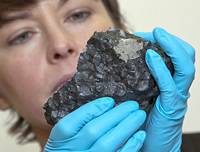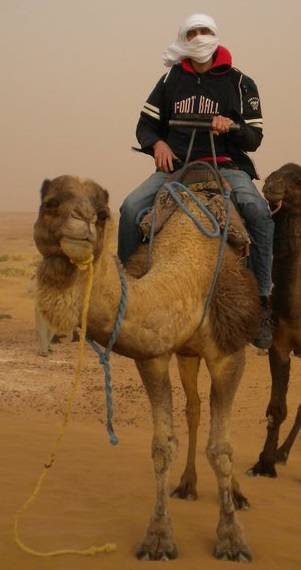Next week is the Annual Meeting of the Meteoritical Society. This year it is being held in Morocco by scientists from Hassan II University of Casablanca. All of us in the Museum’s meteorite research team are heading out to Casablanca on Sunday for a week of presentations, discussions, networking and a great chance to explore some of Morocco.
 The Moroccan Atlas Mountains. A great place to go meteorite hunting! (Image credit: E. Vaccaro)
The Moroccan Atlas Mountains. A great place to go meteorite hunting! (Image credit: E. Vaccaro)
Many meteorites have been found in Morocco, including the Martian meteorite Tissint, so this is a very appropriate place for hundreds of meteorite-lovers to convene (the organisers have even named the conference meeting rooms after meteorites!).
Morocco has an abundance of meteorites because it is largely desert, and deserts are excellent places to look for odd, dark coloured rocks from space. Most of the meteorites found in this region are given the designation NWA (for North West Africa) as it is not always known exactly where they fell before they were passed on to collectors and institutions by meteorite dealers.
Museum scientist Dr Caroline Smith holds the Tissint meteorite. It is now the largest Martian meteorite in the Natural History Museum collections.
Museum research being presented at the meeting includes:
- Professor Sara Russell on the new carbonaceous chondrite, Jbilet Winselwan.
- Dr Caroline Smith on planning for Mars sample return missions.
- Dr Penny Wozniakiewicz on collecting and identifying micrometeorites.
- Dr Ashley King on fine-grained rims in CM chondrites.
- Dr Jennifer Claydon on the Al-Mg system in chondrules.
- Dr Natasha Stephen on mapping Martian meteorites.
- PhD student Epifanio Vaccaro on characterising primitive meteorite matrix.
- PhD student Natasha Almeida on using CT to study the interiors of meteorites.
We hope to keep you updated on the Meteoritical Society Meeting via our blog and our Twitter account @NHM_Meteorites.
And here's what one of our PhD students, Epi, got up to on his last time in Morocco! (Image credit: E Vaccaro)




